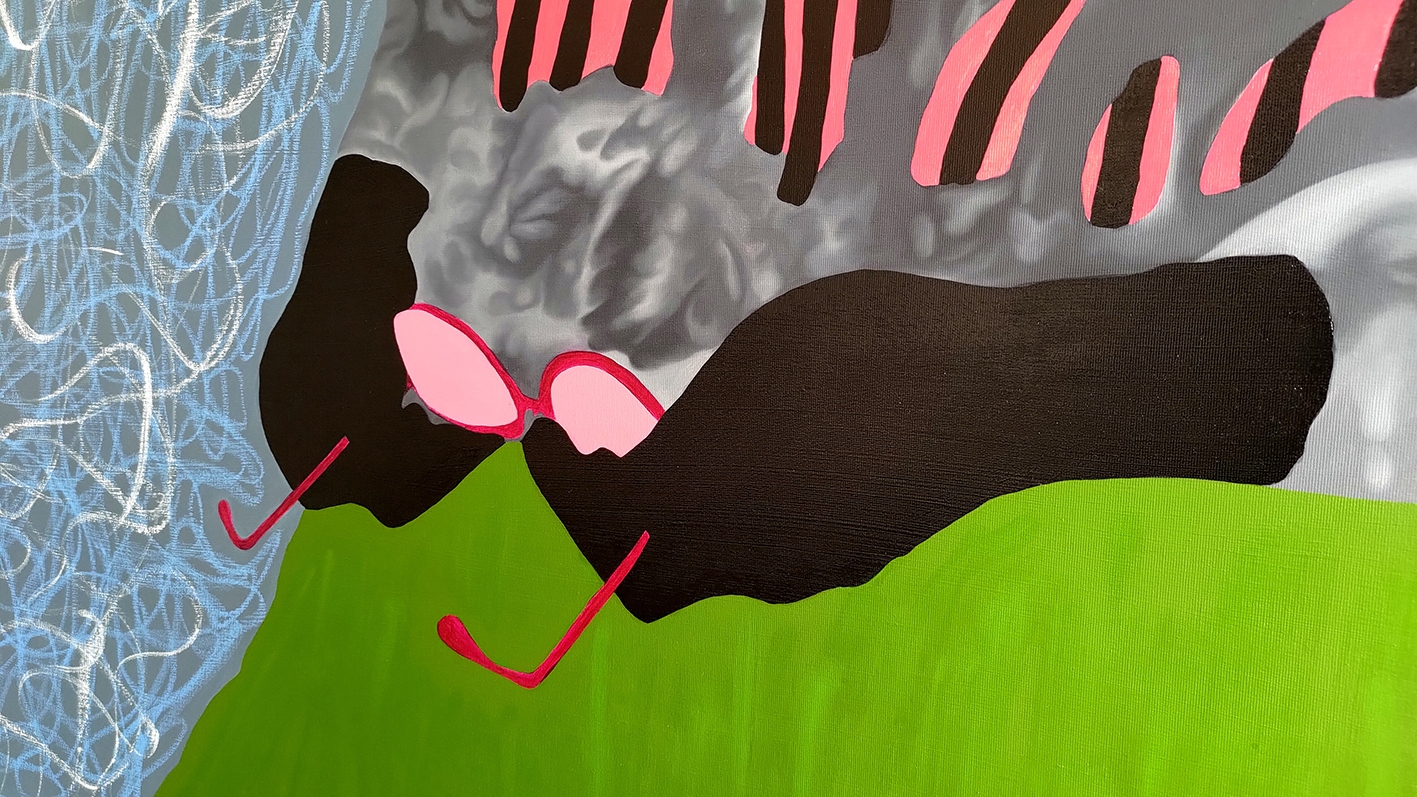“My interest in memory and remembering arises again and again, thus I think it cannot be coincidental. It must be something essentially important for it to disappear for a while, but then always surface again.
In November 2022, I showed a series of paintings bearing the same name in the exhibition Is there Hope For Lovely Creatures?, held in the Lasnamäe Pavilion of Tallinn Art Hall. Tamara Luuk, the curator of the exhibition, has written about the works: “Reviving memories in order to banish them has often been the motivation behind distinctive works of figuration. As time passes, Maria is growing more and more skillful in manipulating what has been stowed away in her memory. She adds, cuts, accentuates and disperses, resulting in paintings of fragmentary mosaiques and drawings of wildly branching fables. Often, only the title references back to the initial impulse, the work itself tries to break this bond, and to move on to another scale. It is peculiar how memories come around a long time later, in a happy, balanced period of life. And it is peculiar how the will of self-expression can spread over such wide landscapes.”
“In the works shown in the Lasnamäe Pavilion I tried to awaken and revisit my most vivid childhood memories. This time I have taken a slightly different path to understand how the environment in which I grew up influenced my coming of age and my personality. I tried to recreate a kind of universal yet personal and predominantly feminine figurative language. And – how many times already! – I notice with a surprise that none of the images emerge from the others, and that the exhibition as a whole carries contradictions that are still looking for a resolution.”
Maria Lapteva Sidljarevitš
Maria Lapteva Sidljarevitš (1982) completed her master’s degree in painting at the Estonian Academy of Arts in 2014. She has had several personal exhibitions and has participated in numerous group exhibitions.
Sidljarevitš has received wide attention, including on to the popular platform ZA/UM, where the writer Mudlum characterizes her as follows: “As a painter, Maria is a kind of an unexpected mixture of naivism and expressionism, but she is in constant progress. Also, I believe that there are strong ties to Russian conceptualism of the 1920s /…/ In her paintings, she tries to find answers to the main questions of life, the endless allures of life, death, love and suffering. Who are you in this world? Where do you belong, what do you have to do, where do you have to go, who do you have to become? Where is god? What is loneliness? There is no false shame in facing the big questions of life, no social art. When she paints, she talks to her canvas, touches it, and sometimes it seems as if she is not creating the painting, but the painting is creating her and itself simultaneously, as if the painting is emerging out of itself.”
The artist expresses her gratitude to: A. Litvinov, Järsi OÜ, P. Laptev, K. Kogelnik, T.Luuk.
Supported by the Cultural Endowment of Estonia.
Exhibitions in Draakon gallery are supported by the Cultural Endowment of Estonia, Estonian Ministry of Culture and Liviko Ltd.




